A lengthy oral tradition of lyrical storytelling is the foundation of Persian literature. Persian poetry has a wide range of forms, each of which is distinctive and lovely in its own right.
Mastering the creativity and intelligence to write such magnificent pieces of literature requires someone who is skilled in this field, and Persian poets are naturally talented people who have shown their beautiful works confidently throughout history.
Persian poets were gifted at conveying the complete range of human emotions, and they did so with such dexterity and accuracy that they could do so in only a few verses. Few civilizations have ever attained such lyrical development levels as the Persians.
Let’s begin by studying the greatest Persian poets of all time and discovering what makes their work so powerful.
9th Century
We will now mention some great Persian poets in the 9th century.
1.Rudaki
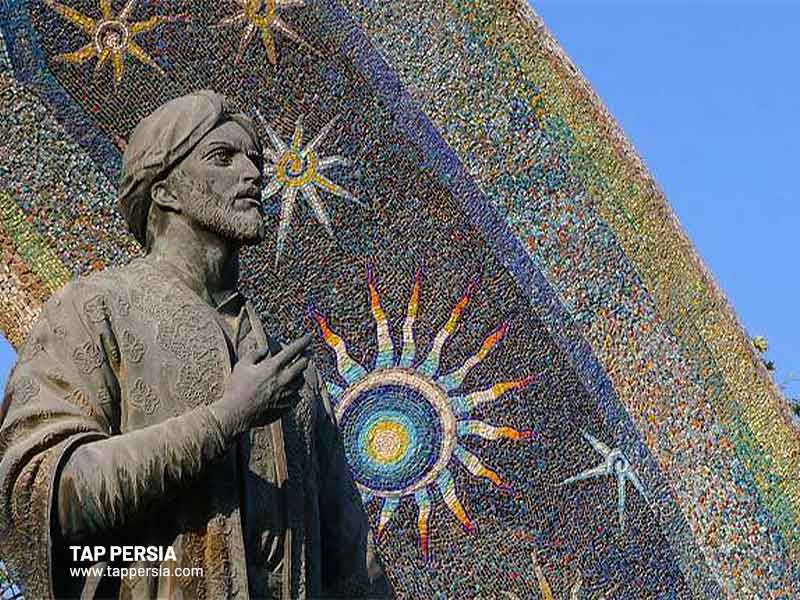
Born in Panjakent, Tajikistan, Abu Abdollah Jafar ibn Mohammad Rudaki (ca. 858–941) was a court poet under the Samanid king Nar II (r. 914–943) at Bukhara. He was also a gifted singer and pianist (in modern-day Uzbekistan). Due to his early use of the New Persian language, Rudaki is often considered the founder of Persian poetry.
The official language of the areas ruled by the Sassanids was Persian (224-651). Persian remained the official language of the succeeding Muslim kings after the Arab invasions of the territories, albeit it was known as “New Persian” and written in the Arabic script. The language and culture migrated into northern India and Central Asia from the old Persian-speaking regions. In addition to making Persian a poetic language, Rudaki is recognized for influencing the form and style of Persian poets of later generations. Many people regard to him as the “father of Persian literature” since he created the literary forms of poetry such as the ghazal, qasidas, and rubais as well as the concept of the diwan (a collection of a poet’s short works).
Of the tens of thousands of prose poetry credited to Rudaki, only a small portion has survived. In addition to his collection of poetry, one of his most significant literary works is the translation of the collection of Indian tales Kalilah wa Dimnah from Arabic to Persian, which brought him prominence in Perso-Islamic literature.
10th Century
We will now mention some great Persian poets in the 10th century.
2.Ferdowsi
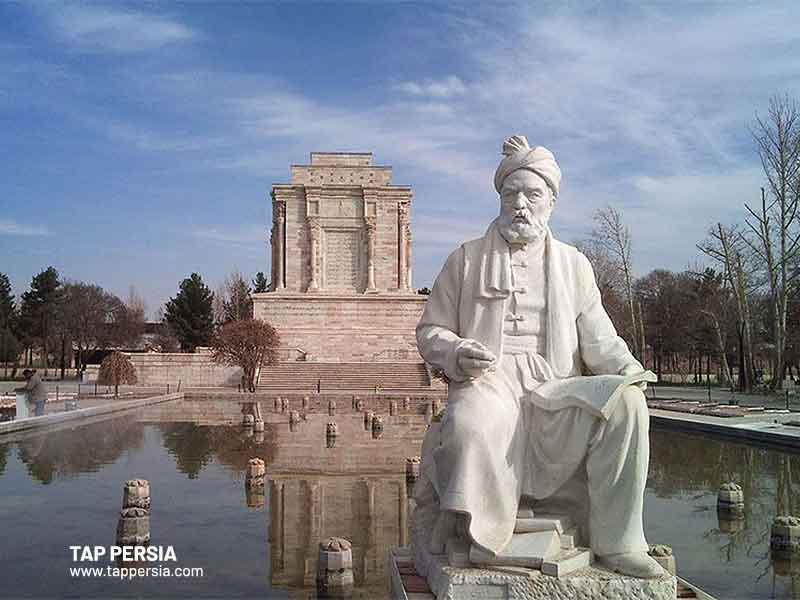
Abolqasem Hassan Mansour, commonly known as Abolqasem Ferdowsi, is the author of the Shahnameh (“Book of Kings”), the world’s longest epic poem composed by a single poet and the national epic of Greater Iran. He was born in a village in Khorasan called “Pazh” in the year 940 AD, and he passed away at the age of 80 in the year 1020 AD.
His father was a wealthy and prestigious Tous peasant with enormous riches. Ferdowsi was financially independent as a child thanks to the inheritance from his father. However, when he lost the property, he progressively fell into poverty. In 977 AD, Ferdowsi started composing the Shahnameh.
The early years of Ferdowsi are not well known. The poet had a wife who most likely read and likely belonged to the same landowner class. He had a son, who passed away at the age of 37, and the poet wrote an elegy about him that he included in the Shahnameh.
A local clergyman had forbidden Ferdowsi’s burial in the Tus cemetery, therefore he was laid to rest in his own yard. The tomb was covered with a mausoleum built by a Ghaznavid governor of Khorasan, and it became a sacred place. On Reza Shah’s instructions, the Society for the National Heritage of Iran restored the mausoleum between 1928 and 1934, turning it into what would now be considered a national shrine.
3.Abusaeid Abolkheir
Sheikh Abusaeid or Abu Sa’eed, also known as Abusaeid Abolkheir or Abu Sa’id Abu’l-Khayr, was a well-known Persian Sufi and poet who made significant contributions to the development of the Sufi tradition.
Most of what is known about his life come from the book Asrar al-Tawhid, which was published 130 years after his death by Mohammad ibn Monavvar, one of his grandchildren.
The book, which is a significant early Sufi work in Persian, comprises a compilation of his remarks, as well as a narrative of his life, told via tales from various sources.
During his lifetime, word of his reputation reached Spain and all of the Islamic world. He was the first Sufi poet to employ popularly accepted love songs to communicate and clarify mysticism, and as such, he had a significant impact on the development of Persian Sufi poetry. He spent most of his life there.
Among the other well-known poets of this century are Khwaja Abdullah Ansari and Farrukhi Sistani.
11th Century
We will now mention some great Persian poets in the 11th century.
4.Omar Khayyám, Poet (1048–1131)
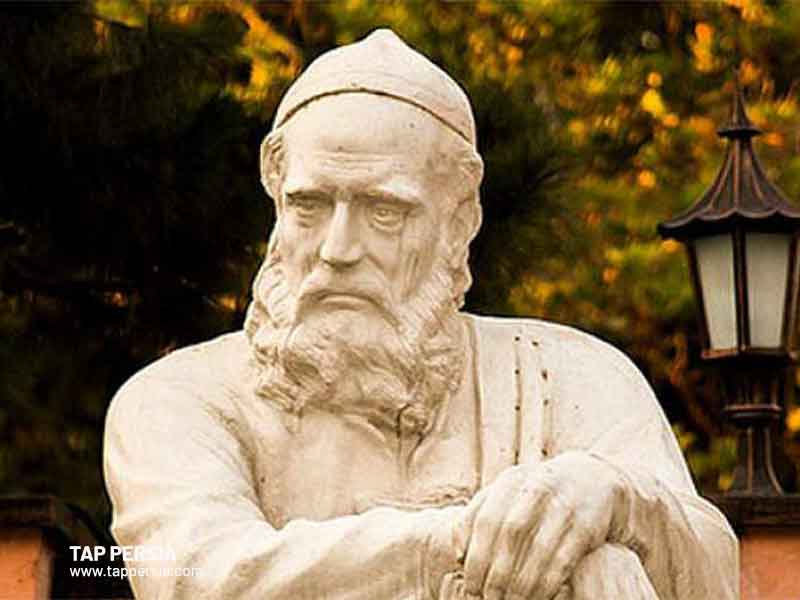
Iran’s Nishapur is where Omar Khayyam was born. Before turning 25, he wrote a number of works, including a book on music, Problems of Arithmetic, and one on algebra. He was an eminent mathematician and astronomer.
Outside of mathematics, Khayyam is most recognized for Edward Fitzgerald’s well-known translation of the Rubaiyat, a collection of roughly 600 brief four-line poems, in 1859. Some people have forgotten Khayyam’s scientific accomplishments, which were considerably more significant, because of his renown as a poet. Only roughly 120 of the Rubaiyat’s forms and poems can be definitively traced to Khayyam; other versions of these forms and verses may be found in earlier Persian literature.
5.Baba Tahir Oryan
The 11th-century Persian poet Baba Tahir was born and raised in Hamadan. Baba Tahir’s do-beytis (Two Verses), a type of Persian quatrain composed in the regional dialect of the time, which are largely responsible for his reputation. His poetry gained popularity among readers over time, to the point that some of them were set to music.
His poetry generally includes contemplative, philosophical overtones that explore the essence of life. Some of Baba Taher’s poetry was also written in Arabic and Luri. His poetry has also been translated into a variety of other languages today.
Dervish and mystic Baba Tahir were. Baba was also a revered title for Sufis who were held in great regard by their followers. The birthdate of Baba Tahir is not known, according to any records. However, he lived at the same time as Toghrol, the conqueror of the Seljuks, as Ravandi notes in Rahat al-Sodur.
There are numerous other well-known poets from this century, but Sanai, Nasir Khusraw, and Nizami are among the most well-known.
12th Century
We will now mention some great Persian poets in the 12th century.
6.heikh Ahmad Jami
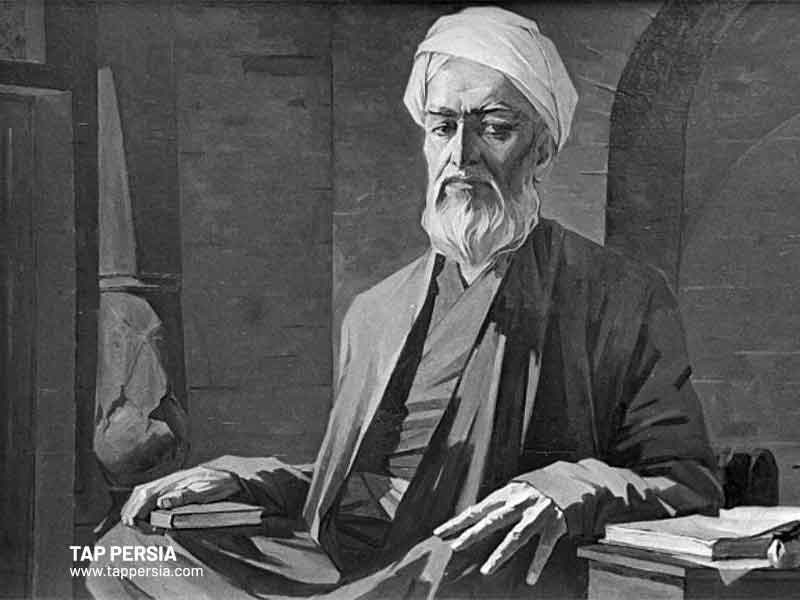
Ahmad-e Jam was a Persian poet, writer, mystic, and Sufi. Sheikh Ahmad Jami, also known as Ahmad-e Jam, was born in Namagh (Kashmar), a hamlet in the Iranian province of Khorasan. He comes from an agricultural background. He was reportedly a big, muscular, and tough child who went by the moniker Zhandeh Pil, or “huge elephant.” He was also characterized as having remarkable blue eyes and red hair.
He was known for living wild in his youth, but following a life-changing event, he started leading a solitary, austere existence. He spent several years alone in the local highlands before settling in Jam, which is located along the current Afghan border. Around the age of forty, he began to gather followers and publish books on philosophy, including Seraj al Saerin, Konuz al Hekma, and Meftah al Najat (The Treasure of Wisdom) (The Lamp of Pilgrims).
When he eventually made the pilgrimage to Mecca, he was already old and passed away shortly after arriving home. Today, Sufis, seekers, and musicians travel to Jam to visit his tomb as a place of pilgrimage.
13th Century
We will now mention some great Persian poets in the 13th century.
7.Jalal al-Din Muhammad Rumi, poet (1207–1273)
Jalal al-Din Muhammad Rumi was a Persian Muslim philosopher and scholar who is best known by his pen name, Rumi. He lived from 1207 to 1273 CE and is most known for his mystical poetry, which emphasizes the possibility of a meaningful and higher existence through one’s understanding and love of God.
Rumi’s poetry is distinguished by a profound comprehension of the human condition that acknowledges both the pain of loss and the euphoric ecstasy of love. His art is centered on the power of transcendent love, whether it is for another person or God, and it communicates this force via scenes from everyday life as well as imagery, symbols, and stories taken from the Quran, hadiths, Persian mythology, tradition, and lore.
8.Shams Tabrizi
The spiritual mentor of the well-known poet Rumi was the Persian Sufi poet and mystic Shams ol-Din or Shams Tabrizi. Although Jalaluddin Rumi is well-known around the globe, few people are familiar with Shams, who served as the model for some of Rumi’s most poetic passages.
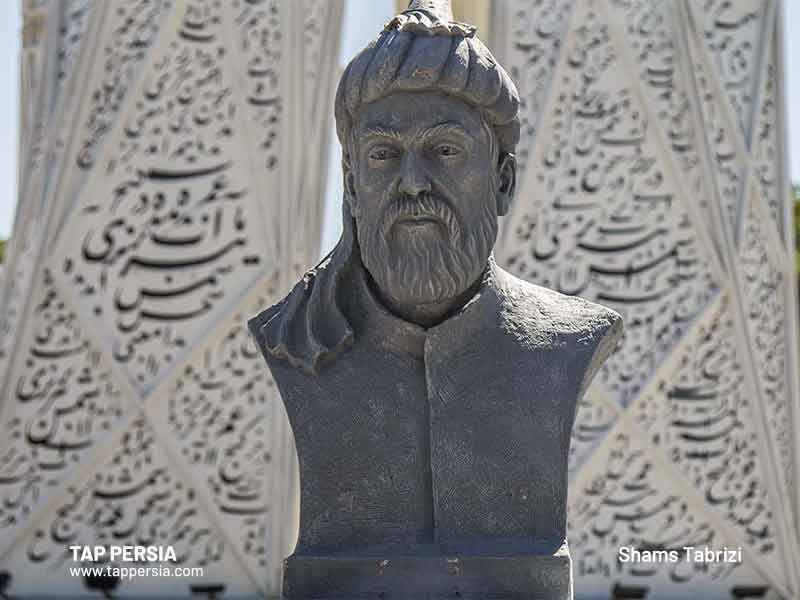
Shams was born in Iran’s Tabriz city. He had a passionate Sufi mystic as his guru and was spiritually oriented even as a little boy. He had a lot of other intelligence as well.
When he was an adult, he moved about in search of a spiritual friend. He was very good at concealing his knowledge and appeared to be a traveling salesman who made a fortune by educating kids and weaving baskets.
He finally got the company he had been looking for throughout his life when, toward the end of his life, he met Rumi.
Shams changed Rumi’s perspective on Sufism and taught him the way to the grandeur of the almighty. Their intimacy turned into the cause of Rumi’s supporters’ hostility against Shams. Diwan-e Shams-e Tabrizi, one of Rumi’s most important compositions, is named for his spiritual mentor.
Saadi is another well-known poet who deserves consideration in this century.
14th Century
We will now mention some great Persian poets in the 14th century.
9.Hafez, poet (born about 1310–1325)
Hafez, a Persian lyric poet, was raised in Shiraz. His full name is Khwaja Shams ol-Din Mohammad Hafez-e Shirazi. His life is mostly unknown, however, it’s possible that he memorized sections of the Qur’an after hearing his father read them. He dropped out of school to work as a copyist and at a bakery after his father passed away. Hafez was a poet in the court of Abu Ishaq and a religious college instructor.
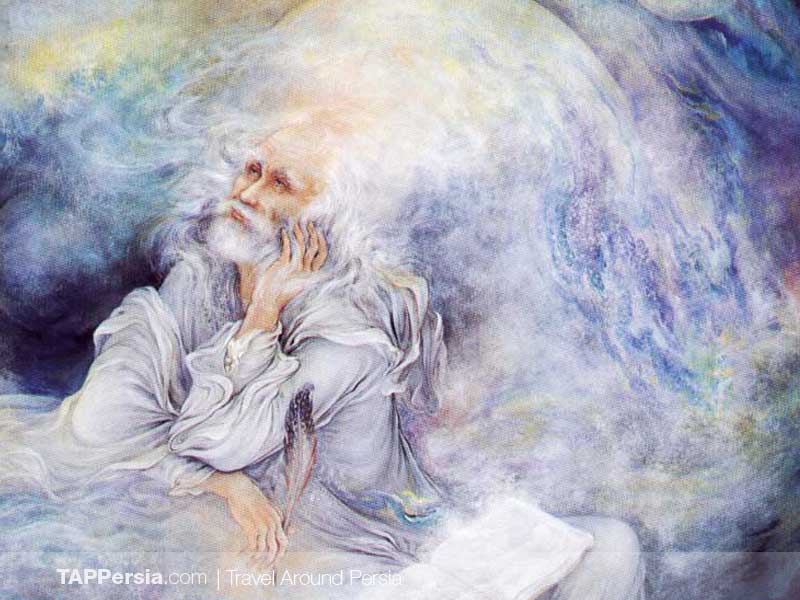
His influence may still be felt today. He was one of the most famous Persian poets. He and his work continue to be significant to Iranians as the composer of innumerable Ghazals that reflect love, spirituality, and protest, and many of his poems are regarded as proverbs or sayings. In Shiraz’s Musalla Gardens lies Hafez’s mausoleum.
Ubayd Zakani is another of this century’s top Persian poets.
16th Century
We will now mention some great Persian poets in the 16th century.
10.Vahshi Bafghi
Vahshi Bafghi was born in 1532 in Bafq, a rural community in central Iran close to Yazd, the provincial capital. In the meter of the romantic epic Shirin and Farhad by Persian poet Nizami, Shirin and Farhad by Vahshi is a Persian folktale and love romance from Sassanid Iran. One of the poet’s most well-known works has been acknowledged despite the fact that the introduction and only 500 of the story’s poems were written when Vahshi passed away.
This well-known Persian epic from Vahshi includes over 100 manuscripts that have been recorded worldwide. In the 19th century, Wesal and Saber, two Shirazian poets, took on the assignment of finishing Vahshi’s poetry.
After Vahshi’s demise, Awhadi, his literary executor, collected almost 9,000 poems of his poetry. They comprise a variety of Persian literary genres, such as the Ghazal, Qasida, and panegyrics to patrons and saints of the time.
17th Century
We will now mention some great Persian poets in the 17th century.
11.Sheikh Bahaii, Scientist, Architect, Philosopher, and Poet (1546–1620)
In the late 16th and early 17th centuries, Sheikh Bahaii was a Safavid Iranian Shia Muslim scholar, astronomer, philosopher, mathematician, architect, and poet. He was born in Baalbek, Ottoman Syria (now Lebanon), but when he was a little kid, he and the rest of his family relocated to Safavid Iran.
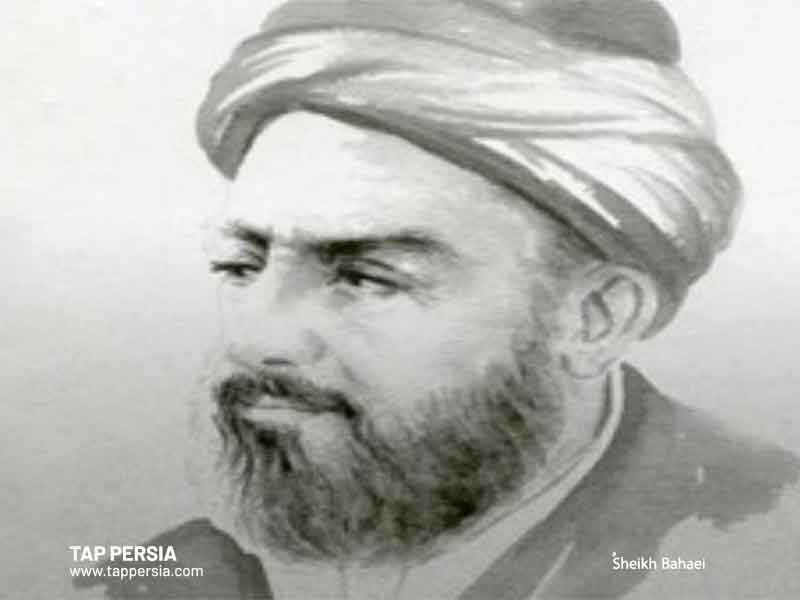
Before the Copernican hypothesis gained mainstream, he was one of the first astronomers in the Islamic world to propose the theory that the Earth may be moving. He is credited with being a key founding member of the Isfahan School of Islamic philosophy. Later in life, he was one of Mulla Sadra’s tutors.
More than 100 treatises and books on various topics were written by him in Arabic and Persian. He is credited with a variety of architectural and technical concepts, however, none of them can be supported by sources. These could have included Isfahan’s Charbagh Avenue and Naqsh-e Jahan Square. He is buried in the Imam Reza mausoleum in Mashad, Iran.
18th Century
We will now mention some great Persian poets in the 18th century.
12.Hatef Esfehani, Poet
Hatef Esfahani was born in the Iranian province of Isfahan (also known as Esfahan) and most likely passed away there in 1783. Hatef was an authority on ghazal composition (odes). A ghazal is a poem on a specific theme that has a complex structure and is elevated by a lyrical or rhapsodic mood. His writing of tarji’band poems was another area of expertise.
One of the greatest Iranian mystics, Hatef is credited for educating countless individuals about the greater meanings of life and the soul’s journey. Hatef wrote poetry that was fluid, unambiguous, and straightforward. In particular, he emulated Saadi and Hafez in the way he composed his odes. Hatef is highly recognized throughout most of Europe, but especially in Italy, because of his superb odes.
20th Century
We will now mention some great Persian poets in the 20th century.
13.Nima Yushij, Poet
Ali Esfandiyari, also known as Nima Yoshij (1896–1960), was the eldest child of Ebrahim Nouri and was born on November 12, 1896, in Yush (a village close to Nour county in the Mazandaran region of Iran). He was a modern Tabari (a Mazandarani dialect) and Persian poet who founded the she’r-e no (“new poetry”) or often known as she’r-e Nimaei movement in Persian poetry (Nimaic poetry).
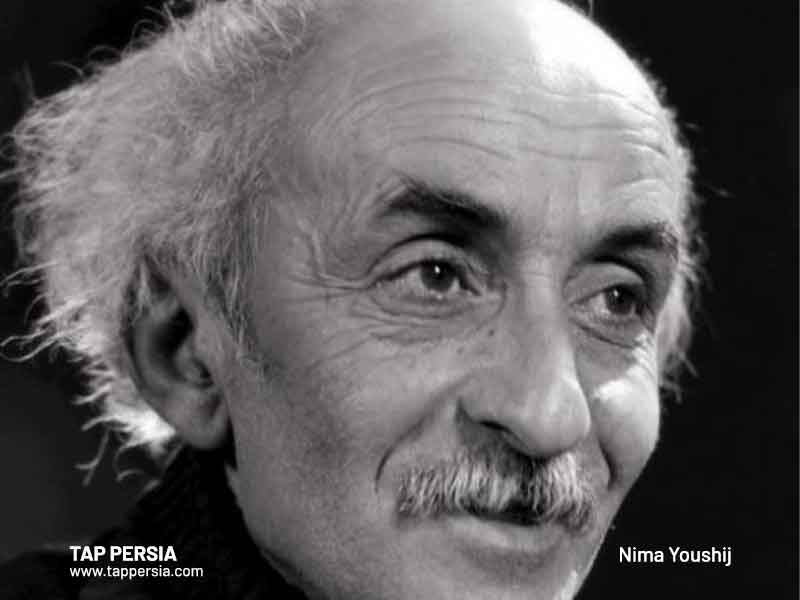
When he was still a school student, he started composing poems. One of his professors, Nezam Vafa (1883–1960), took Nima under his wing and inspired him by reading his poetry and assisting him in honing his creative skills. Nezam Vafa was a lyric poet who specialized in writing straightforward love poems in the traditional manner.
Nima placed more emphasis on the idea that the length of the line should be decided by the depth of the thinking, rather than by the standard length of a “Beyt” (verse). He removed poetry from the court’s customs and introduced it to the public. By incorporating the everyday dialect of the populace, Nima gave his compositions color and character.
He passed away from pneumonia at Shemiran, a neighborhood in northern Tehran, in January 1960, and as per his last wishes, he was buried in the town of Yush.
14.Ahmad Shamlou, Poet
The most well-known modern poet from Iran, Ahmad Shamlou, is unanimously regarded as being on par with other notable and well-known poets from throughout the world by critics, artists, and intellectuals.
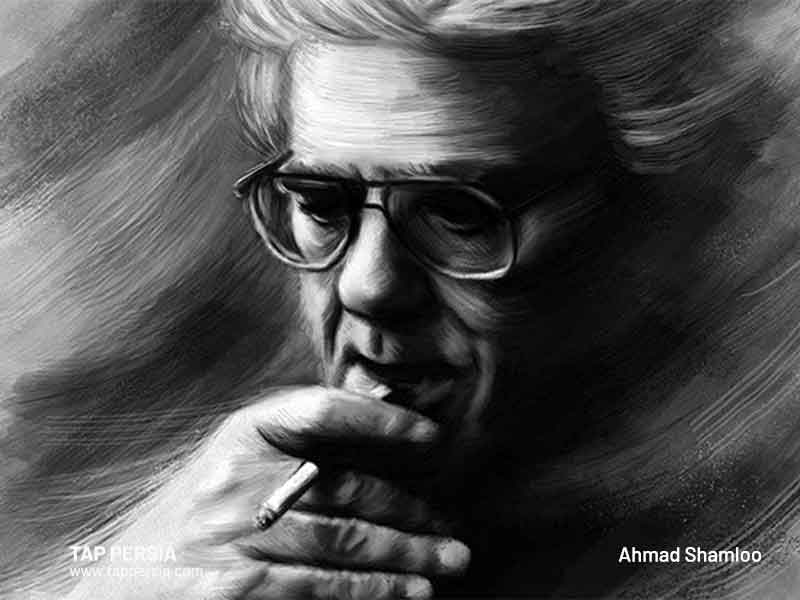
His writing career spans the last 60 years from his birth in 1925. Shamlou has worked as a translator, dramatist, broadcaster and journalist. And for at least three generations of Iranian intellectuals, he has been a significant pioneer and leader in each of these realms. He is a perfect example of what Iranian intellectuals were capable of in the second half of the 20th century.
The poetic perspective of Ahmad Shamlou is consistent with both Western Modernist ideas and the contemporary interpretation of traditional Persian poetry. He is a humanist and a socially conscious philosopher who has expertly weaved societal ideas and personal love and compassion together. He has a strong desire for fairness and constantly lives with optimism.
Shamlou has worked as a broadcaster, dramatist, translator, and journalist. Because of serious diabetes health complications, he endured many surgeries before having his right foot amputated in 1997. As a result of complications from his diabetes, he passed away on Sunday, July 23, 2000, at 9 p.m. at his residence in Dehkadeh Fardis in Karaj.
15.Fereydoun Moshiri, Poet
In the Iranian capital of Tehran, Fereydoon Moshiri was born in September 1926. His father had administrative positions, although his family was recognized for its poetry, and he attended school in Tehran and Mashhad at different periods of his life. Prior to becoming a poet, Fereydoon Moshiri worked as a journalist, and this allowed him to meet important figures in the Persian language and literature, like Ala’me Dehkhoda, Dr. Moein, and Ibrahim Pourdavoud.
The ultimate goal of those who invented free verse and poetry is to show how Moshiri was interpreted. It indicates that he was permitted to employ rhymes in a sensible and appropriate way, mix it with a fresh perspective on the people, objects, and nature around him, as well as a sensitive emotion and experience, to give his poetry a distinctive quality. Best recognized for bringing together the New Poetry started by Nima Yushij and ancient Persian poetry on one side, Moshiri is a poet. The expansion of the socioeconomic and geographic reach of contemporary Persian literature is one of the main contributions of Moshiri’s poetry, according to certain experts.
16.Forough Farrokhzad, Poet
Only a very tiny percentage of Iranian women have succeeded outside the house without relying on a romantic engagement with a man or male sponsorship. The poet Forugh Farrokhzad (1935–1967), the most illustrious lady in Persian literature history, is the most well-known of them all.
In Tehran, Forugh Farrokhzad was born into a middle-class household with seven other kids. She attended public schooling until the ninth grade, following which she obtained some sewing and painting instruction before being married at the age of seventeen. A year later, her lone child—the boy addressed in “A Poem for You”—was born. When her marriage broke down less than two years later, Farrokhzad sent her kid back to her former husband’s family in order to follow her calling as a poet and lead an independent life. In poems like “The Wedding Band,” “The Captive,” “To My Sister,” and “Call to Arms,” she expresses her feelings about traditional marriage, the plight of women in Iran, and her own situation as a wife and mother who was no longer able to live a traditional life. She was thirty-two years old when she passed away in an auto accident in February 1967.
17.Parvin E’tesami, Poet
Parvin E’tesami is one of Iran’s unmatched cultural treasures (March 17, 1907 – April 4, 1941). In her capacity as the Bahar Journal’s head editor, she translated literature for over 40 volumes. She was the first academic to translate Les Misérables by Victor Hugo. Considering that Parvin’s parents were highly educated and progressive, her upbringing was outstanding.
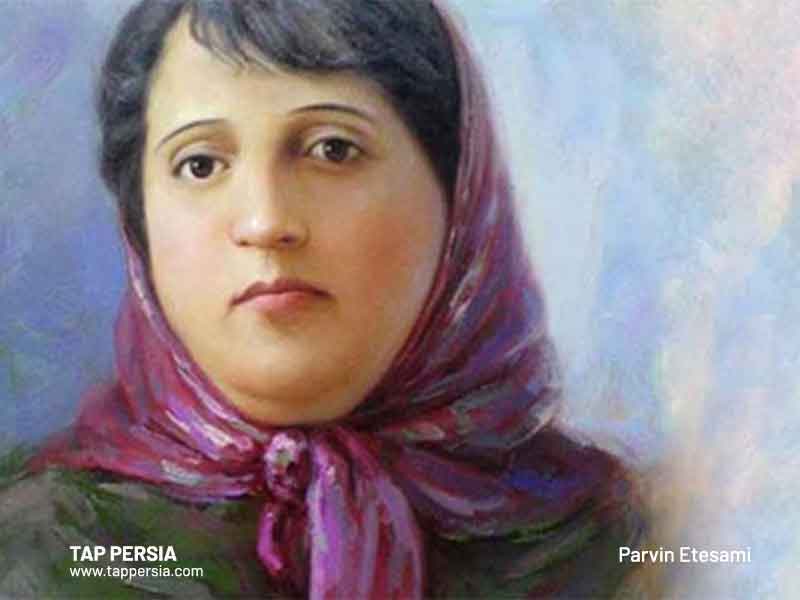
They supported Parvin, fostering her skill and inventiveness. When she was 8 years old, she first began to write poetry. She had mastered the poetic idioms of illustrious Iranian poets including Sanai, Khayyam, Rumi, Hafez, Saadi, and Naser Khusraw by the age of 11.
The poetry and intelligence of Parvin E’tesami are unparalleled in Iranian literary history. Her poetry is a national treasure and cannot be reduced or ignored. In the anthology of Qasida and Ghazal, more than 5,000 poems that represent her priceless works are preserved.
Other modern Persian poets that have shown significant brilliance are Rahi Mo’ayeri, Sohrab Sepehri and Qeysar Aminpour.

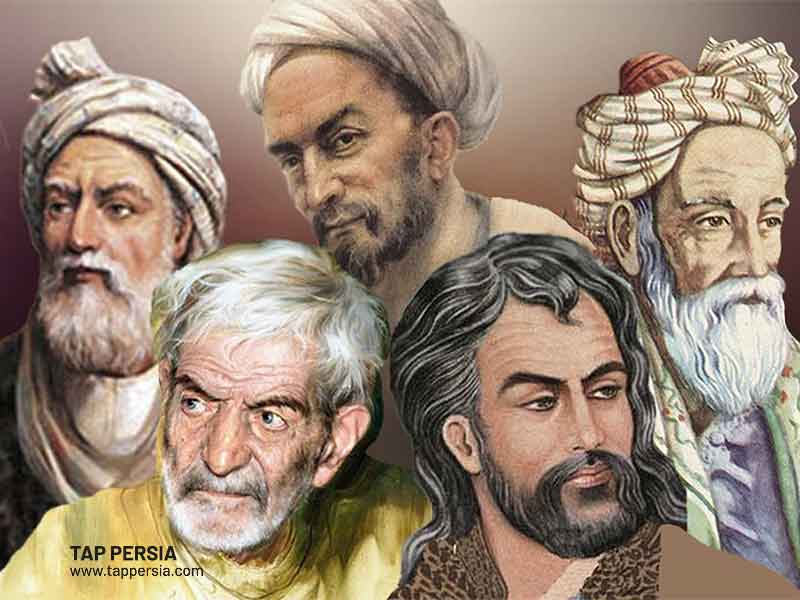


Comment (0)